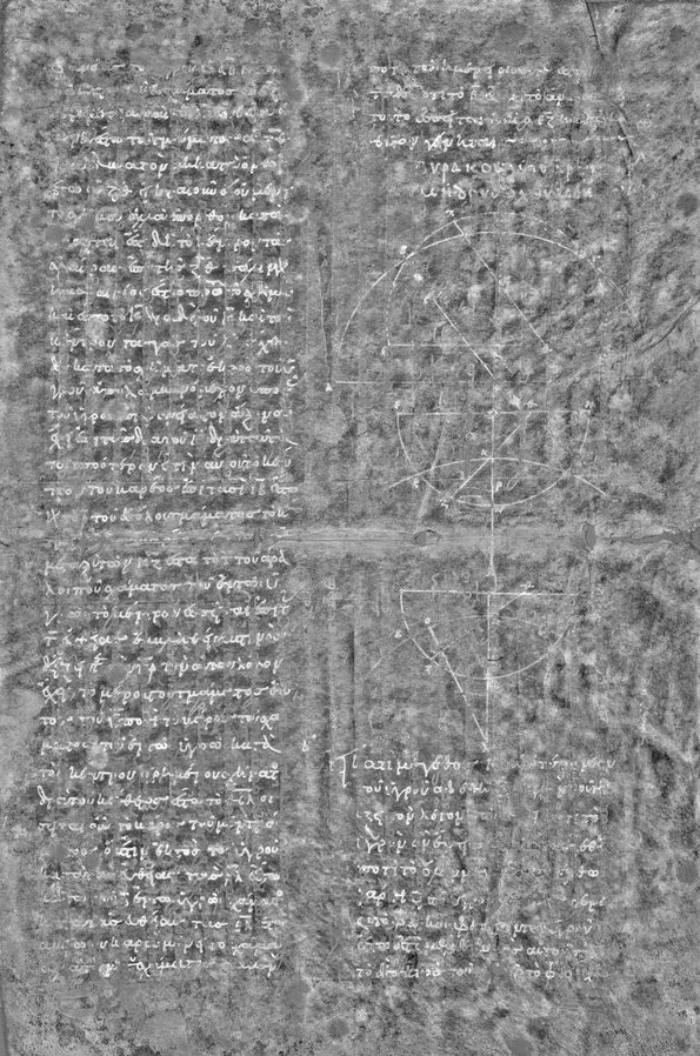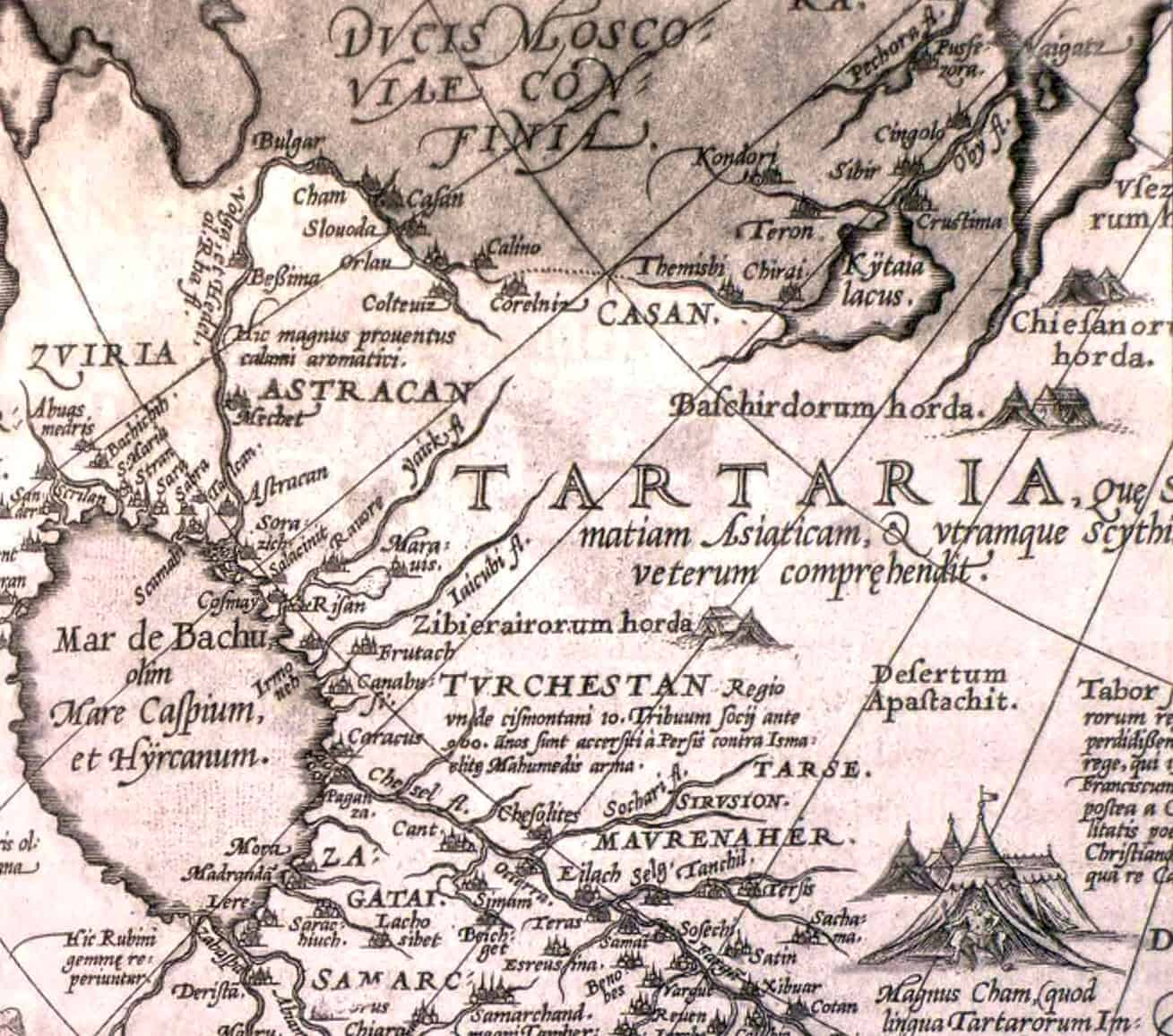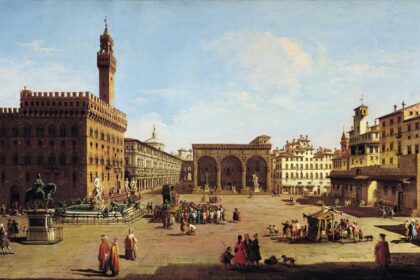In 1906, a Danish math historian and philologist named Johan Ludvig Heiberg was able to get his hands on a library catalog. In it was observed a prayer book made of parchment – which was inscribed twice. The book’s synopsis and a transcription of an earlier, overwritten part were both included in the catalog. The earlier text must have originated with Archimedes, a fact that was instantly apparent to Heiberg, one of the foremost experts on ancient Greek mathematics.
This means that the Danish scholar has uncovered the earliest surviving copy of Archimedes‘ works written in Greek. There are no other known copies of the mathematician’s writings that are older than this one by around 400 years. Ancient originals no longer exist since the papyrus scrolls on which Archimedes penned his treatises in the 3rd century BC have long since been destroyed. Texts from antiquity were only carried down if someone copied them at regular intervals.
The Archimedes Palimpsest is consisting of 174 parchment folios.
Page-turning, not page-scrolling, has been the norm since late antiquity

Papyrus was the medium of choice for Archimedes’ writings, most of which were letters to colleagues. All capital letters, no punctuation, and no spaces between words characterize his writing style. The Library of Alexandria, the biggest library of its day, currently has some of his correspondence.
However, even it wasn’t enough to keep Archimedes’ works hidden for long. Papyrus scrolls were no longer used after the 4th century. Books, or codexes, were the format of choice. Any ancient writings that were not in codex form were then forgotten. Authors who were well-liked by their contemporaries in the literary and reading communities could count themselves fortunate, since their works were often reproduced.
That was not the case with Archimedes. We are aware of this because of Eutokios. The mathematician offered commentary on Archimedes’ treatises from the 5th century and highlighted the great challenges Archimedes had in acquiring his writings. In addition to the commentary, Eutokios also transcribed the writings of Archimedes himself, ensuring that many of his writings would endure through the generations.
Only three complete works of Archimedes have survived
Eutokios had avoided the biggest threat, but the ancient book culture still faced more challenges in the near future. Because most libraries went the way of the dinosaurs along with the rest of antiquity. The best scribes and copyists were now located in Christian monasteries, where they showed little enthusiasm for Archimedes’ work.
Since then, only three codices containing Archimedes’ writings have been discovered. All three were originally from Constantinople, which is now Istanbul, and were reproduced in the 9th and 10th centuries. Later, researchers came up with the very original titles Codex A, B, and C for these three versions.
The original text has been translated into other languages. The Latin and then the Arabic versions of Archimedes were still available. Three novels only made it into the Middle Ages from copies of the original Greek manuscripts. Codex B was first recorded as part of a papal library in 1311, and after that it disappeared. So, Codex A was the primary source for Archimedes for centuries, until its disappearance in 1564.
Then came the codex C. At first, nobody could find the book. Codex C was written on parchment and included seven of Archimedes’ treatises. It was made of prepped animal skin. This allowed for easy text extraction and subsequent page reuse. And in 1229, this was precisely what happened with the book.
The most well-known palimpsest ever discovered, Codex C

It is uncertain how Codex C made its way from Constantinople to Jerusalem, but once there, a local monk dismantled the book, wiped the pages with acid, and then scraped the text off with a stone. After that, he folded the papers in half lengthwise, flipped them through a full 90 degrees, and re-inscribed the text with Christian prayers. The original Codex C was now a palimpsest. But if you squinted, you could make out sketches and words from Archimedes’ treatises.
A monastery close to Bethlehem was where we would find the palimpsest, but a few decades later it turned up in Constantinople. There are no myths or legends surrounding the object’s origin or its subsequent placement. An 1840s citation, however, places it in the Constantinople library of the Jerusalem Church of the Holy Sepulchre, or Metochion. After Heiberg uncovered the palimpsest, he decoded the majority of Archimedes’ Greek text and quickly publicized his findings. Heiberg also photographed the palimpsest, which proved to be crucial since not long thereafter the book was lost forever.
Archimedes is now protected by the World Wide Web forever
Finally making its way to Paris, the piece spent decades collecting dust in a dark, damp basement. In October of 1998, an auction company in New York auctioned a palimpsest that was in such terrible shape that it could hardly be read.
The Greek Ministry of Culture was one of two desperate bids, but in the end, an unnamed American paid $2,000,000 for the book. As it turned out, he cared about keeping the book safe for future generations. This prompted him to make it accessible for study by donating it to Baltimore’s Walters Art Museum not long after he bought it.
It took 10 years for specialists there, led by William Noel, to fix it, remove mold and adhesive, and then scan it using complex imaging techniques. This allowed for the majority of the text to be reconstructed and made legible again. William Noel chronicled the exciting tale of the palimpsest with the help of Reviel Netz in their book, “The Archimedes Codex.”
In this way, the removal of Archimedes’ writing in 1229 helped ensure its continued existence. Indeed, the Internet has made it possible to see what may be the most well-known palimpsest ever in stunningly crisp detail. A remarkable illustration of the string of luck that has to be strung together for ancient wisdom to survive the test of time.






